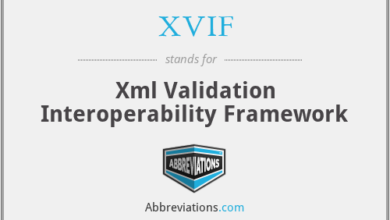What is LRTSjerk: Understand the World of Online Negativity

In the landscape of the 21st century, the digital age has revolutionized how we connect, share, and interact. However, this era of connectivity has also ushered in a wave of online negativity, introducing challenges unseen in previous generations. LRTSjerk emerges as a hypothetical archetype within this realm, symbolizing the darker aspects of our digital interactions. This deep dive aims to unravel the complexities of LRTSjerk, shedding light on its origins, impacts, and the broader implications for society.
Understanding LRTSjerk
At its core, LRTSjerk represents the embodiment of online trolling, harassment, and the pervasive culture of negativity that has found fertile ground on the internet. This term, while fictional, encapsulates behaviors that range from mild annoyance to serious abuse. LRTSjerk is not an individual but a phenomenon, highlighting how digital platforms can sometimes become arenas for conflict and discord.
https://t.co/ptiO6udpgD
— UsaFoxNews (@usaFoxNews1) October 14, 2023
Lrtsjerk, a term that might sound unfamiliar, is a unique phenomenon that has piqued the curiosity of many. It’s not just a word; it’s a world of hidden secrets waiting to be uncovered. pic.twitter.com/YUmdGaP7ZZ
Origins of Online Negativity
The genesis of online negativity is deeply intertwined with the internet’s inherent anonymity. This anonymity acts as a shield, enabling individuals to express themselves without the constraints of face-to-face accountability. While this can empower free speech and protect privacy, it also opens the door for malicious behavior. The duality of anonymity serves as a catalyst for the LRTSjerk behavior, where the absence of physical presence emboldens individuals to act aggressively or thoughtlessly.
The Impact of LRTSjerk Behavior
- Mental Health: The constant barrage of negativity that users can encounter online has tangible effects on mental health. Individuals subjected to or engaging in LRTSjerk behavior may experience increased levels of stress, anxiety, and depression, highlighting the psychological toll of online toxicity.
- Social Divisions: LRTSjerk behaviors exacerbate social divisions, creating echo chambers and polarizing online communities. This polarization undermines the potential for constructive dialogue, replacing it with conflict and misunderstanding.
- Digital Discourse: The prevalence of LRTSjerk behavior distorts the nature of online discourse, prioritizing sensationalism and conflict over reasoned debate and meaningful conversation. This shift challenges the notion of the internet as a space for positive exchange and growth.
The Role of Platforms
Social media platforms are at the forefront of the battle against LRTSjerk behavior. Their design, algorithms, and moderation policies play pivotal roles in shaping the nature of online interactions. These platforms have the power to curb the spread of negativity by fostering a positive community through careful regulation and by promoting healthy interactions.
Community Standards and Moderation
Implementing effective community standards and moderation is crucial for combating LRTSjerk behavior. Platforms must navigate the delicate balance between protecting free speech and ensuring a safe online environment. This involves crafting clear policies, employing advanced moderation technologies, and encouraging a community-led approach to governance.
The Power of Anonymity
Anonymity in the digital realm offers a double-edged sword. It allows individuals to explore and express themselves freely but also removes layers of accountability. This lack of accountability is a key factor in the propagation of LRTSjerk behaviors, as users feel emboldened to act without fear of real-world consequences.
Counteracting LRTSjerk
- Education: Awareness and education about the consequences of online negativity can foster a more empathetic and understanding online culture. Highlighting the impact of LRTSjerk behaviors encourages users to reflect on their actions and consider their effects on others.
- Positive Engagement: Promoting positive interactions and amplifying uplifting content serve as antidotes to online negativity. Platforms and users alike can contribute to a shift in the digital atmosphere, countering LRTSjerk behaviors with kindness and support.
- Reporting Mechanisms: Effective reporting tools are essential for community members to address and mitigate harmful behaviors. These mechanisms empower users to take action against LRTSjerk behavior, facilitating a safer online environment.
Personal Responsibility
Every individual navigating the digital world holds the power to shape the nature of online interactions. Choosing to engage empathetically and constructively contributes to a broader cultural shift away from LRTSjerk behaviors and towards a more positive and supportive online community.
Looking Forward
The challenge of overcoming LRTSjerk and related phenomena is ongoing and complex. It demands a concerted effort from all stakeholders—individuals, platforms, and society—to cultivate an online culture that values positivity, empathy, and constructive engagement above all.
Conclusion
LRTSjerk, as a representation of online negativity, underscores a pivotal challenge of the digital age. Addressing this issue requires a comprehensive approach that includes education, platform accountability, and a commitment to positive personal engagement. By recognizing the profound effects of our online behavior and striving for a culture of positivity, the digital community can steer away from negativity and towards a more inclusive and constructive online environment.
FAQs
What is LRTSjerk, and why is it relevant in discussions about online negativity?
LRTSjerk is a term symbolizing online trolling and negativity, reflecting the darker aspects of digital interactions. It’s relevant as it encapsulates behaviors ranging from annoyance to abuse, shedding light on pervasive online conflicts.
How does online anonymity contribute to the emergence of LRTSjerk behavior?
Anonymity on the internet empowers individuals to express themselves freely. While this encourages free speech, it also removes accountability, emboldening users to engage in LRTSjerk behaviors without fear of consequences.
What are the psychological impacts of LRTSjerk behavior on individuals?
Constant exposure to online negativity, such as LRTSjerk behavior, can lead to increased stress, anxiety, and depression. The article explores the tangible effects of this toxicity on users’ mental health.
How can social media platforms combat LRTSjerk behaviors and foster positive interactions?
Social media platforms play a crucial role in regulating online behavior. The article discusses the significance of platform design, algorithms, and moderation policies in curbing negativity and promoting healthy interactions.
What role does personal responsibility play in mitigating LRTSjerk behavior?
Every individual holds the power to shape online interactions positively. Choosing empathy and constructive engagement contributes to a cultural shift away from LRTSjerk behaviors. The article emphasizes the impact of personal responsibility in fostering a more supportive digital community.




